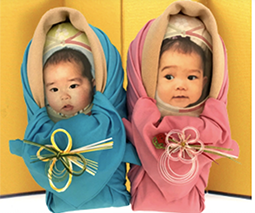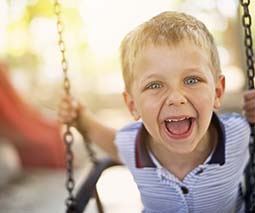5 surprising revelations from Australia’s stay-at-home dads study

We’ve been cheering for more stay-at-home dads for years now and the common perception is that things are slowly shifting, with more women going back to work and more men staying home. But a new study by the Australian Institute of Family Studies proves that stay-at-home dads are not as common as we like to think. They also do things a bit … differently. Here’s how the work/child balance is playing out in houses across the nation.
1. Stay-at-home dads are still rare
Firstly, a definition. A stay-at-home dad (SAHD) is defined as a father who has children under the age of 15 years living with him. He is not working, and he has a spouse or partner who is working some hours.
Back in 2011, four per cent of two-parent, heterosexual families in Australia had a stay-at-home dad. Fast forward to June 2016, and the figure hasn’t changed. The study found that stay-at-home dad arrangements are still stuck at a minuscule four per cent. This suggests very little has changed over five years. Meanwhile, stay-at-home mums account for 31 per cent of two-parent families.
Interestingly, the data shows that the greatest increase in SAHDs actually happened from 1981 to 2011, at which point the number of SAHDs seems to have plateaued. Uh-oh.
2. The dads who do stay at home are pretty diverse
It turns out that today’s stay-at-home dads are a mixed bag. There are fathers who are unemployed and actively seeking work, some who aren’t working out of choice, and others who are on leave (so they have a job, they’re just not doing it right now, thank you very much). Across all of these families, the mother was either working full time, or part time (35 hours a week of less).
3. But they’d rather stay home with the big kids
One assumption is that SAHDs are just a gender flip of stay-at-home mums. But the study revealed this isn’t true, with the biggest clue being the age of the youngest child at home. Turns out 53 per cent of stay-at-home mums were looking after children aged 0-2 years. While only 21.2 per cent of stay-at-home dads were at home with their baby or toddler.
The numbers shifted again as the kids got older. So by the time the youngest child was six or older, 57.4 per cent of stay-home dads were holding the fort, while only 26.5 of stay-home mums were opting to be home for their school-aged children.
The take-away message? Dads are still way less likely to stay home with the baby.
4. And man, do they use their time differently
No surprises, SAHDs allocated their at-home time differently to SAHMs.
In stay-at-home-mother families, mums spent 37 hours per week on child care. And the same amount of time (37 hours) on housework. In stay-at-home-father families, dads spent 19 hours on childcare, and 28 hours on housework. Hmm.
That said, stay-home mums are typically looking after younger children, which we all know means more work. But still, that’s quite the difference in childcare hours and housework.
So what kinds of activities are SAHDs doing the most? The study showed that in stay-at-home-father families, the two activities done “always or usually” by the dad were staying home with sick children, or ferrying the kids around.
The two activities that seem to be shared the most by a SAHD and his partner were playing with the kids and putting them to bed. (Interesting side note: getting kids dressed, was still overwhelmingly a ‘mum job’ across most family types).
5. Thankfully, we all agree that SAHDs are a good thing
While fifty years ago no fathers were pushing prams, attitudes are quite rightly changing, and across the board, most parents in the study agreed that children do just as well in stay-at-home-father families. Of course they do!
Here’s to the bright future of sharing the parenting load evenly.
Thoughts? Comments? Reactions? Let us know.









